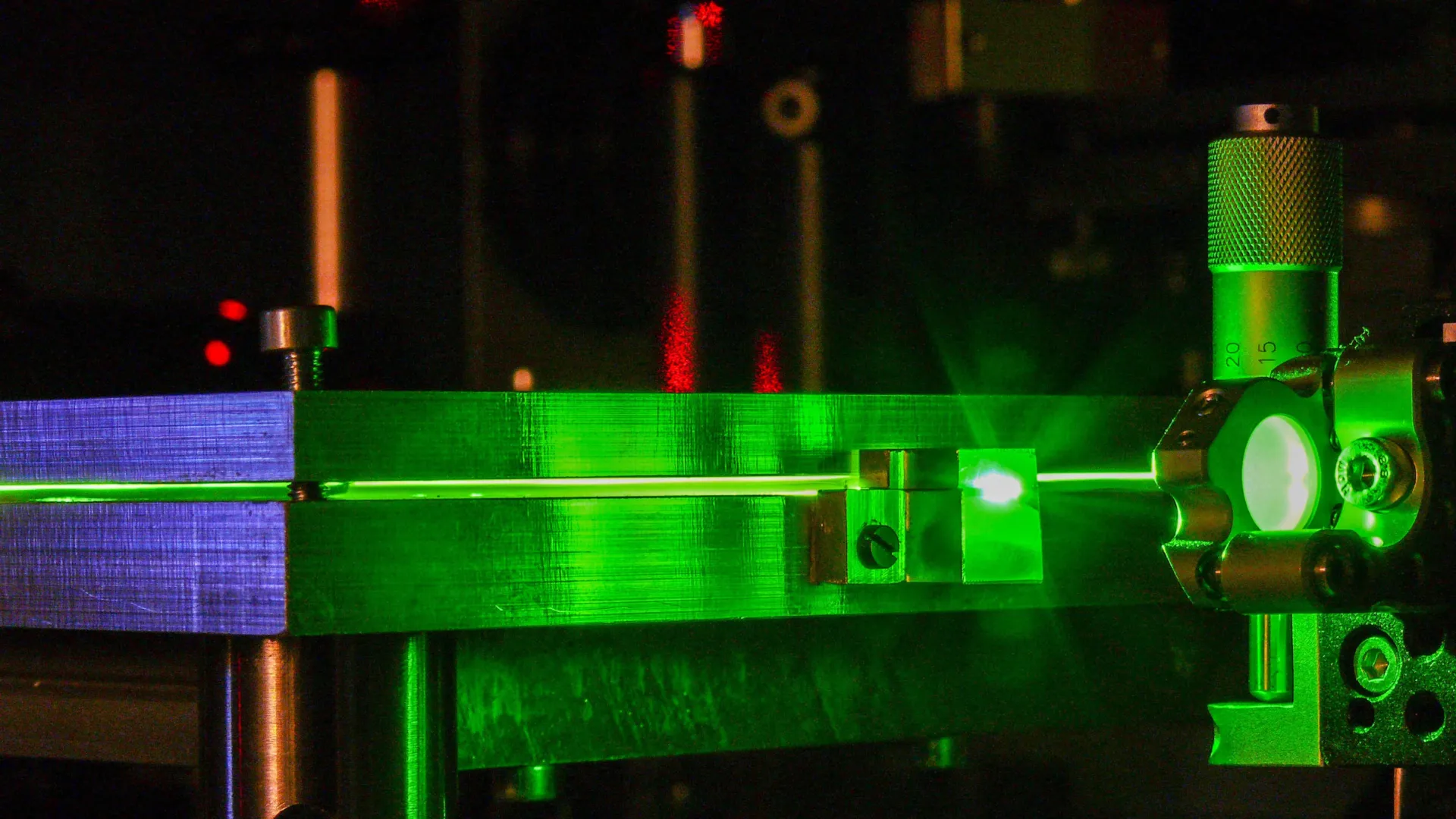Scientists capture real-time birth of ultrafast laser pulses
Researchers demonstrate how harmonic mode-locking builds up in fiber-based Mamyshev oscillators, unraveling the dynamics of laser emission
- Date:
- July 6, 2025
- Source:
- Institute of Electrical and Electronics Engineers
- Summary:
- Scientists have captured the moment a laser "comes to life"—and what they found challenges long-held beliefs. Using a special technique to film laser light in real time, researchers observed how multiple pulses grow and organize themselves into a stable rhythm. Instead of one pulse splitting into many (as previously thought), these pulses are amplified and evolve through five fast-paced phases, from initial chaos to perfect synchronization. This discovery not only deepens our understanding of how lasers work but could also lead to sharper, faster technologies in communication, measurement, and manufacturing.
- Share:

The Mamyshev oscillator (MO) is a type of fiber laser capable of producing high-energy laser pulses at a tunable repetition rate. It is a mode-locked laser which uses light travelling within a closed-loop cavity to produce laser emission. Harmonic mode-locking (HML) is an advanced form of mode-locking process where multiple laser pulses are produced within one round trip of light. MOs employing HML are used for several advanced applications such as optical communication, frequency metrology, and micromachining.
Despite increasing applications of HML MOs, understanding the light buildup dynamics of HML within these lasers is experimentally challenging. In a recent study published in Journal of Lightwave Technology, researchers from Hunan University, China have uncovered the buildup dynamics of HML in an all-fiberized erbium-doped MO. They successfully obtained HML pulse outputs of different orders. In these results, the signal-to-noise ratio of all harmonic pulse trains from the all-fiber MO exceeded 80 dB, demonstrating the high stability of the output. Moreover, they investigated the transient dynamics during the startup process of HML in the MO.
"The starting dynamics of HML in the MO, characterized by the time-stretch dispersive Fourier transform technique (TS-DFT) revealed that the generation of HML is not dominated by the splitting effect of the single pulse but the amplification of the multiple seeding pulses in the oscillator," explains author Dr. Ning Li.
Using carefully designed experiments, the researchers identified five distinct ultrafast phases that occur between the injection of seed pulses into the laser cavity and the stable emission of HML pulses from the MO. These phases include relaxation oscillation, multi-pulses operation, pulse collapse reconstruction, unstable HML, and a stable HML state. Notably, the identified process of stable HML generation was different from the conventional pulse splitting effect thought to result in laser emission dynamics in MOs. The experimental findings were further supported using numerical simulations.
Using the TS-DFT technique, they monitored the spectra evolution within the MO cavity in real-time and performed a detailed analysis of the dynamic process during HML initiation. Observations revealed that the generation of HML in the MO was not dominated by the conventional single pulse splitting effect but rather by the amplification of multiple seeding pulses within the oscillator.
"Our experimental and simulation results showed that under these conditions, the initial seed pulses within the cavity evolve into stable independent pulses through processes such as gain amplification and energy redistribution, eventually leading to a stable HML state within the resonator," observes Dr. Li. "Results from our study can deepen the understanding of HML operation in MOs, and may provide an active way to control the transient pulse dynamics in the high-performance ultrafast laser systems," he adds.
Overall, this study has extended our understanding of light buildup dynamics in MOs, specifically for advanced lasers using HML. Furthermore, the study challenges the conventional understanding of the light buildup and emission process in MOs.
Besides clarifying the underlying physics, the insights offered by the study may lead to improved designs of MOs - advancing their use across several fields.
Story Source:
Materials provided by Institute of Electrical and Electronics Engineers. Note: Content may be edited for style and length.
Journal Reference:
- Ning Li, Xiangzhen Huang, Jiadong Wu, Tiantian Zhou, Yi Feng, Yuan He, Dongyang Liu, Pinghua Tang, Lili Miao, Chujun Zhao, Shuangchun Wen. Resolving the Buildup Dynamics of Harmonically Mode-Locked Mamyshev Oscillator. Journal of Lightwave Technology, 2025; 1 DOI: 10.1109/JLT.2025.3570159
Cite This Page: